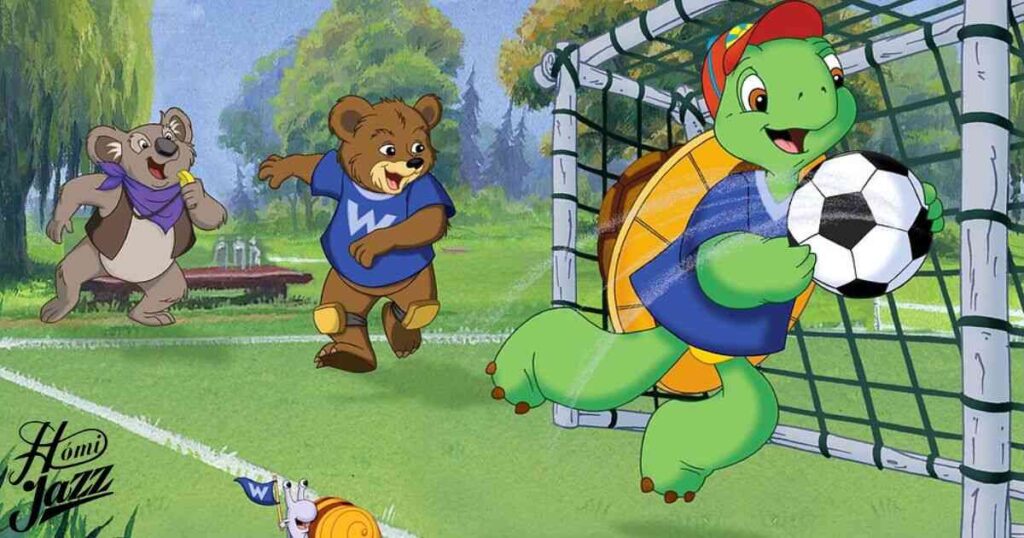Parents face a real challenge managing screen time for toddlers, especially with the abundance of children’s shows packed with rapid action, loud noises, and flashing colors. These overstimulating elements, often found in high-stimulation shows, can contribute to hyperactivity, sleep struggles, and emotional outbursts in young children.
The effects are particularly noticeable during bedtime or transitions between activities. Research highlights that overstimulation from screens can disrupt toddlers’ attention spans and emotional balance. Thankfully, many thoughtfully designed programs prioritize gentle pacing, calming music, and educational content.
This guide highlights the best low-stimulation shows available on major streaming platforms, supported by child development research and expert insights.
Understanding Low Stimulation Content
Understanding what makes TV shows suitable for toddlers has evolved significantly since 2020. Modern research highlights the importance of age-appropriate content design.
What Are Low Stimulation TV Shows for Toddlers?

Low stimulation shows are specially designed programs that avoid overwhelming young viewers. These shows use slower pacing, gentle transitions, and carefully selected colors. Unlike traditional children’s shows with rapid scene changes and loud sounds, low-stimulation content creates a calming viewing experience.
Studies from 2023 reveal that toddlers process information differently than older children. Their developing brains need time to absorb and understand content. Low stimulation shows support this natural learning pace.
These programs typically maintain consistent characters, predictable storylines, and clear speech patterns. Recent pediatric research confirms these elements help toddlers learn effectively while staying emotionally regulated.
The Science Behind Gentle-Paced Toddler Shows
Research published in 2024 demonstrates remarkable benefits of gentle-paced programming. Children watching these shows exhibit better attention spans and improved cognitive skills. Studies conducted across multiple pediatric centers show reduced stress levels during and after viewing.
Brain scans indicate increased activity in areas responsible for learning and memory. Expert child psychologists note that slower-paced shows allow toddlers to process information more thoroughly. This leads to better comprehension and retention of educational content.
Additionally, these shows support natural brain development patterns in children aged 1-4 years. Parents report calmer behavior and improved sleep patterns when switching to gentle-paced programming.
Key Features of Calming Shows for Young Children

Modern low-stimulation shows incorporate specific design elements proven effective through research. Quality programs use soft background music at 60-80 beats per minute, matching a calm heartbeat.
Narrators speak clearly and slowly, using simple language patterns. The color palette focuses on pastel shades and avoids sharp contrasts. Scene transitions happen gradually, often using gentle fades or simple movements. Stories follow linear patterns with clear beginnings and endings.
Each episode maintains consistent pacing throughout its duration. These features create an optimal learning environment for young minds. Production teams work closely with child development experts to ensure appropriate content delivery.
Table: Essential Features of Low-Stimulation Shows
| Feature Category | Key Elements | Impact on Child |
| Audio | Soft music, Clear speech | Reduced stress |
| Visual | Pastel colors, Gentle transitions | Better focus |
| Content | Simple stories, Predictable patterns | Enhanced learning |
Viewing Guide and Resources
Today’s digital landscape offers numerous options for accessing quality toddler programming. Understanding these resources helps parents make informed decisions.
Streaming Platforms for Toddler Shows
The 2024 streaming landscape features several platforms dedicated to toddler content. Netflix leads with over 200 low-stimulation shows, followed by Disney+ and Amazon Prime. PBS Kids offers free access to educational programming through their app.
YouTube Kids provides curated content with advanced parental controls. Apple TV+ features exclusive educational series. Subscription costs range from $5.99 to $14.99 monthly. Each platform offers unique parental control features. Most services allow profile creation for different age groups. Regular content updates ensure fresh programming throughout the year.
Table: Top Streaming Platforms Comparison 2024
| Platform | Monthly Cost | Low-Stim Shows | Parental Controls |
| Netflix | $14.99 | 200+ | Advanced |
| Disney+ | $7.99 | 150+ | Comprehensive |
| PBS Kids | Free | 50+ | Basic |
| Prime | $12.99 | 175+ | Advanced |
Creating a Balanced Viewing Schedule
Current pediatric guidelines recommend specific viewing times based on age groups. Toddlers aged 18-24 months benefit from morning viewing sessions. The afternoon period between 2-4 PM works well for ages 2-3 years.
Experts suggest rotating between different show types throughout the week. A balanced schedule includes educational content, gentle entertainment, and interactive programs. Parents should plan regular screen-free days. This approach helps maintain healthy viewing habits.
Read This Blog: The Ultimate Guide to Creating a Primitive Kitchen: Charm with Modern Functionality
Content Selection Criteria
Recent research identifies key quality markers for toddler programming. Shows should maintain consistent pacing throughout episodes. Avoid programs with frequent scene changes or loud sound effects. Check age ratings provided by Common Sense Media. Look for educational value and positive social messages. Watch for signs of commercial content or hidden advertisements. Consider your child’s individual sensitivity levels. Monitor reactions to different types of shows.
Also Read This Blog: Ultimate Guide to Cabin Bathroom Decor: Creating Your Perfect Rustic Retreat
- Ideal Duration: 30-60 minutes per day for ages 18 months to 3 years, broken into 15-20 minute segments.
- Signs of Overstimulation:
- Rapid scene changes
- Loud or sudden noises
- Flashing lights/colors
- Fast-paced music
- Multiple storylines
- Starting Age: Begin with short segments at 18 months, following AAP guidelines.
- Best Value Platforms:
- PBS Kids (Free, quality content)
- Disney+ (Extensive library)
- Netflix (Regular updates)
- Show Balance:
- 40% educational content
- 30% entertainment
- 30% interactive programs
- Overstimulation Signs:
- Difficulty sleeping
- Increased hyperactivity
- Trouble focusing
- Emotional outbursts
- Resistance to transitions
Managing Screen Time
Modern parenting requires clear screen time boundaries. Set consistent viewing times each day. Create transition routines between activities. Use visual timers for young children. Establish clear start and end signals. Keep devices in common areas. Plan alternative activities for non-screen time. Consider using parental control apps to maintain limits. Regular family discussions about media use help establish healthy habits.
Frequently Asked Question
What is the ideal duration for toddler TV viewing?
The latest pediatric guidelines recommend no more than 30 minutes daily for 18-24 month olds, and up to 1 hour for ages 2-3 years. Break viewing into 15-20 minute segments. Morning hours (9-10 AM) and afternoon (2-4 PM) are optimal viewing times. Avoid screens before bedtime.
How can I tell if a show is too stimulating?
Watch for rapid scene changes under 5 seconds, loud sound effects, flashing colors, fast background music, and multiple voices talking at once. Complex storylines or overlapping plots can overwhelm toddlers. Monitor your child’s behavior during and after watching.
What age should I start with these shows?
Experts recommend no screen time before 18 months. Start with 5-10 minute segments at 18-24 months. Begin with simple shows like Ms. Rachel or Little Bear. Gradually increase duration as your child develops.
Which platforms offer the best value?
PBS Kids provides free educational content. Disney+ ($7.99) offers ad-free viewing with extensive library. Netflix ($14.99) allows downloads for offline viewing. Amazon Prime ($12.99) includes parent dashboard features.
How do I balance different types of shows?
Follow the 40-30-30 rule: 40% educational content, 30% entertainment, and 30% interactive programs. Alternate between types throughout the week. Include screen-free days for balanced development.
What are signs my child is overstimulated?
Look for immediate signs like hyperactivity, poor focus, emotional outbursts, and resistance to transitions. Long-term indicators include sleep problems, behavioral changes, and decreased attention span.
Conclusion
Low stimulation shows offer a safe, educational way for toddlers to experience screen time. By following expert guidelines and paying attention to your child’s responses, you can create a healthy viewing routine.
Remember that every child develops differently. Start slowly, choose appropriate content, and maintain consistent boundaries.
Regular breaks and alternative activities help balance screen time with other important developmental experiences. These strategies support your toddler’s growth while making TV time both enjoyable and beneficial.

Howdy is behind this home blog, sharing personal stories, thoughts, and insights from daily life. I can dedicated to bringing you the latest trends, expert advice, and creative ideas to make your home the sanctuary you’ve always dreamed of. Whether you’re looking for DIY tips, home decor inspiration, home loans, rentals or renovations.







